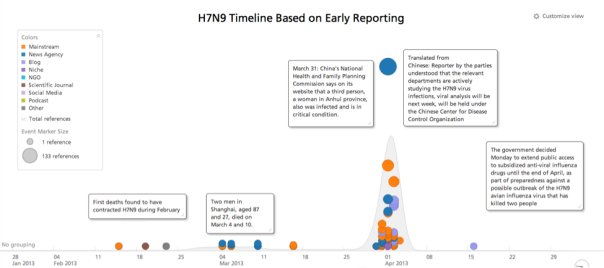Crowdsourcing, predictive analytics and other new tools could go far toward finding innovative solutions for America’s food insecurity.
National Geographic recently sent three photographers to explore hunger in the United States. It was an effort to give a face to a very troubling statistic: Even today, one-sixth of Americans do not have enough food to eat. Fifty million people in this country are “food insecure” — having to make daily trade-offs among paying for food, housing or medical care — and 17 million of them skip at least one meal a day to get by. When choosing what to eat, many of these individuals must make choices between lesser quantities of higher-quality food and larger quantities of less-nutritious processed foods, the consumption of which often leads to expensive health problems down the road.
This is an extremely serious, but not easily visible, social problem. Nor does the challenge it poses become any easier when poorly designed public-assistance programs continue to count the sauce on a pizza as a vegetable. The deficiencies caused by hunger increase the likelihood that a child will drop out of school, lowering her lifetime earning potential. In 2010 alone, food insecurity cost America $167.5 billion, a figure that includes lost economic productivity, avoidable health-care expenses and social-services programs.
As much as we need specific policy innovations, if we are to eliminate hunger in America food insecurity is just one of many extraordinarily complex and interdependent “systemic” problems facing us that would benefit from the application of technology, not just to identify innovative solutions but to implement them as well. In addition to laudable policy initiatives by such states as Illinois and Nevada, which have made hunger a priority, or Arkansas, which suffers the greatest level of food insecurity but which is making great strides at providing breakfast to schoolchildren, we can — we must — bring technology to bear to create a sustained conversation between government and citizens to engage more Americans in the fight against hunger.
Identifying who is genuinely in need cannot be done as well by a centralized government bureaucracy — even one with regional offices — as it can through a distributed network of individuals and organizations able to pinpoint with on-the-ground accuracy where the demand is greatest. Just as Ushahidi uses crowdsourcing to help locate and identify disaster victims, it should be possible to leverage the crowd to spot victims of hunger. As it stands, attempts to eradicate so-called food deserts are often built around developing solutions for residents rather than with residents. Strategies to date tend to focus on the introduction of new grocery stores or farmers’ markets but with little input from or involvement of the citizens actually affected.
Applying predictive analytics to newly available sources of public as well as private data, such as that regularly gathered by supermarkets and other vendors, could also make it easier to offer coupons and discounts to those most in need. In addition, analyzing nonprofits’ tax returns, which are legally open and available to all, could help map where the organizations serving those in need leave gaps that need to be closed by other efforts. The Governance Lab recently brought together U.S. Department of Agriculture officials with companies that use USDA data in an effort to focus on strategies supporting a White House initiative to use climate-change and other open data to improve food production.
Such innovative uses of technology, which put citizens at the center of the service-delivery process and streamline the delivery of government support, could also speed the delivery of benefits, thus reducing both costs and, every bit as important, the indignity of applying for assistance.
Being open to new and creative ideas from outside government through brainstorming and crowdsourcing exercises using social media can go beyond simply improving the quality of the services delivered. Some of these ideas, such as those arising from exciting new social-science experiments involving the use of incentives for “nudging” people to change their behaviors, might even lead them to purchase more healthful food.
Further, new kinds of public-private collaborative partnerships could create the means for people to produce their own food. Both new kinds of financing arrangements and new apps for managing the shared use of common real estate could make more community gardens possible. Similarly, with the kind of attention, convening and funding that government can bring to an issue, new neighbor-helping-neighbor programs — where, for example, people take turns shopping and cooking for one another to alleviate time away from work — could be scaled up.
Then, too, advances in citizen engagement and oversight could make it more difficult for lawmakers to cave to the pressures of lobbying groups that push for subsidies for those crops, such as white potatoes and corn, that result in our current large-scale reliance on less-nutritious foods. At the same time, citizen scientists reporting data through an app would be able do a much better job than government inspectors in reporting what is and is not working in local communities.
As a society, we may not yet be able to banish hunger entirely. But if we commit to using new technologies and mechanisms of citizen engagement widely and wisely, we could vastly reduce its power to do harm.

